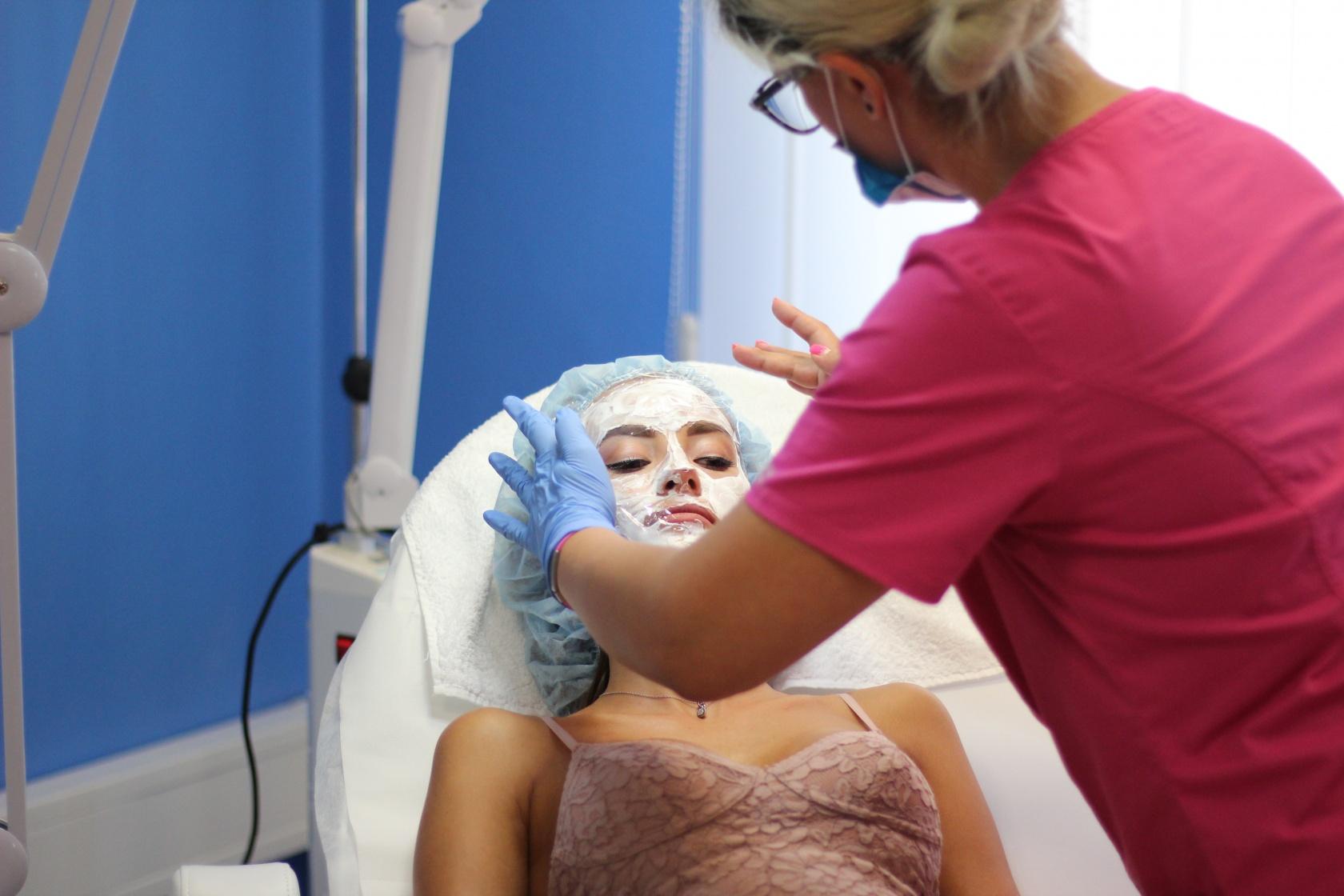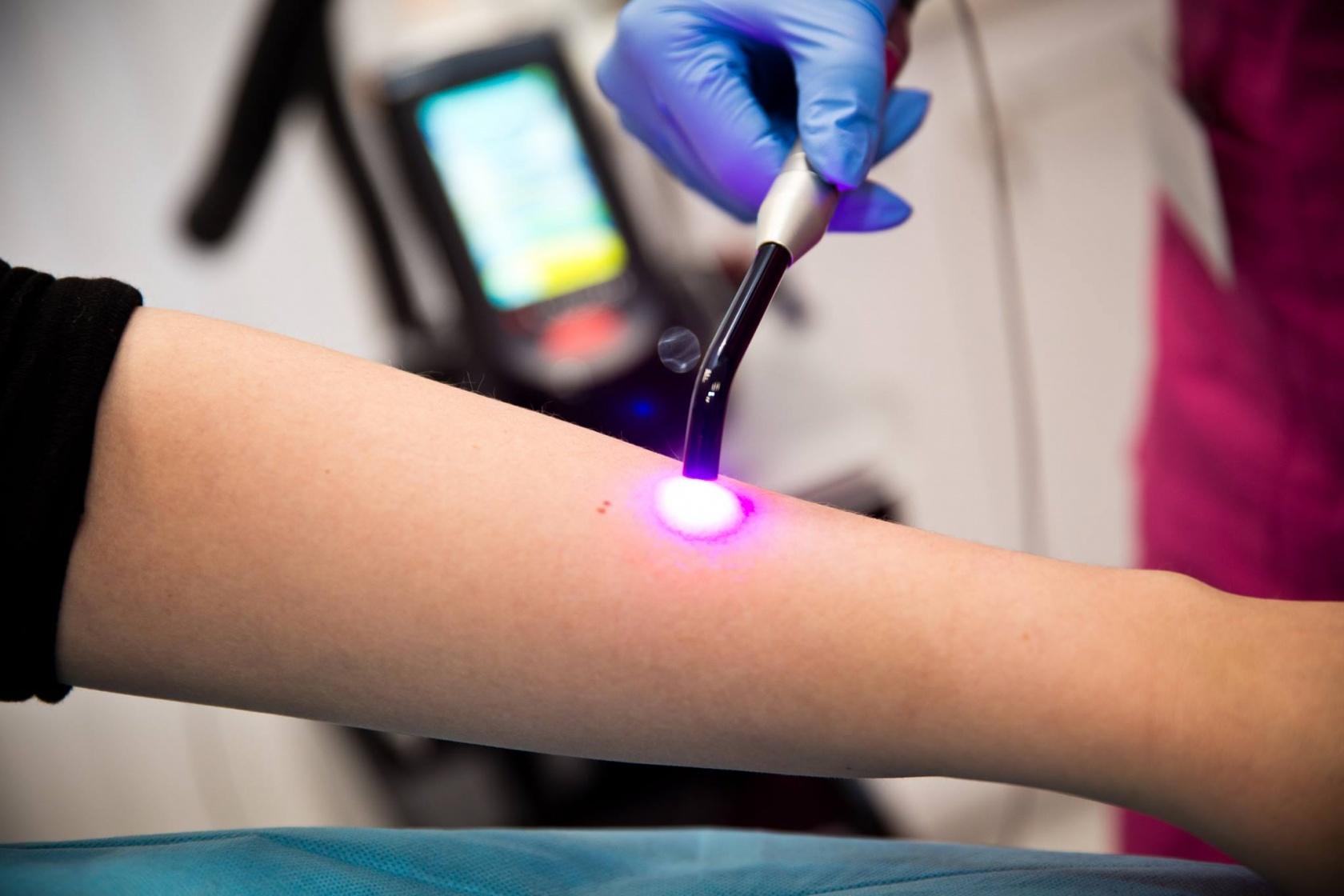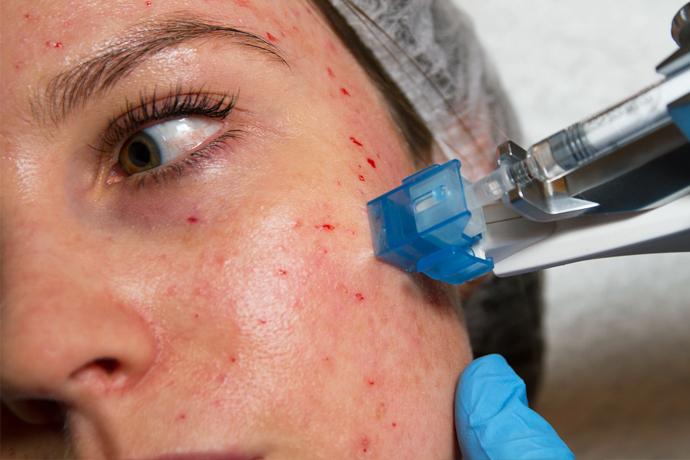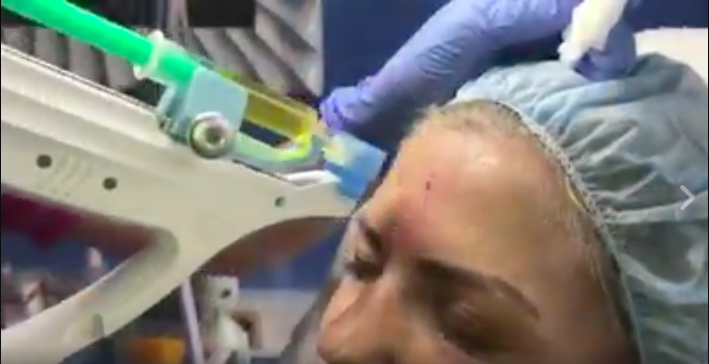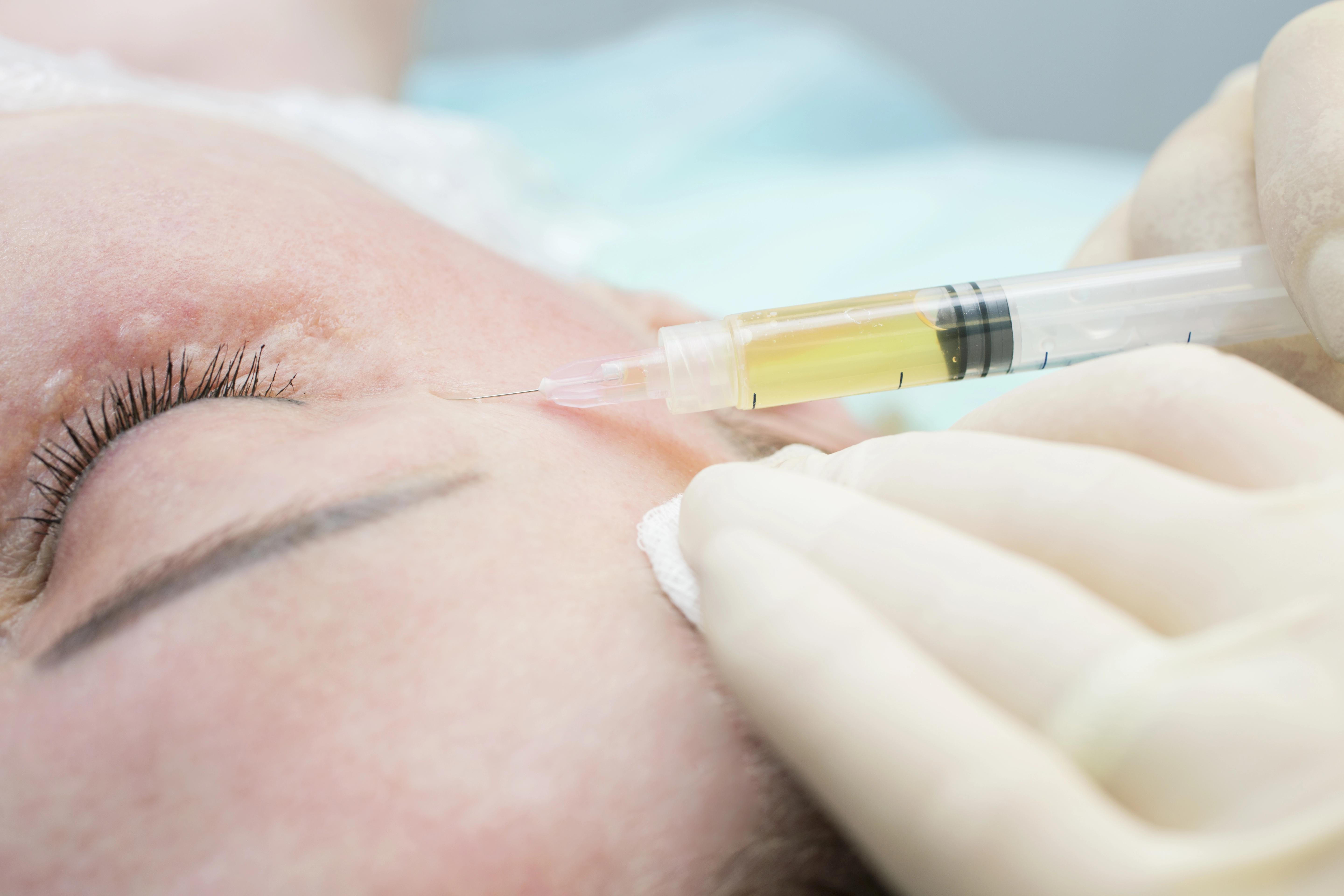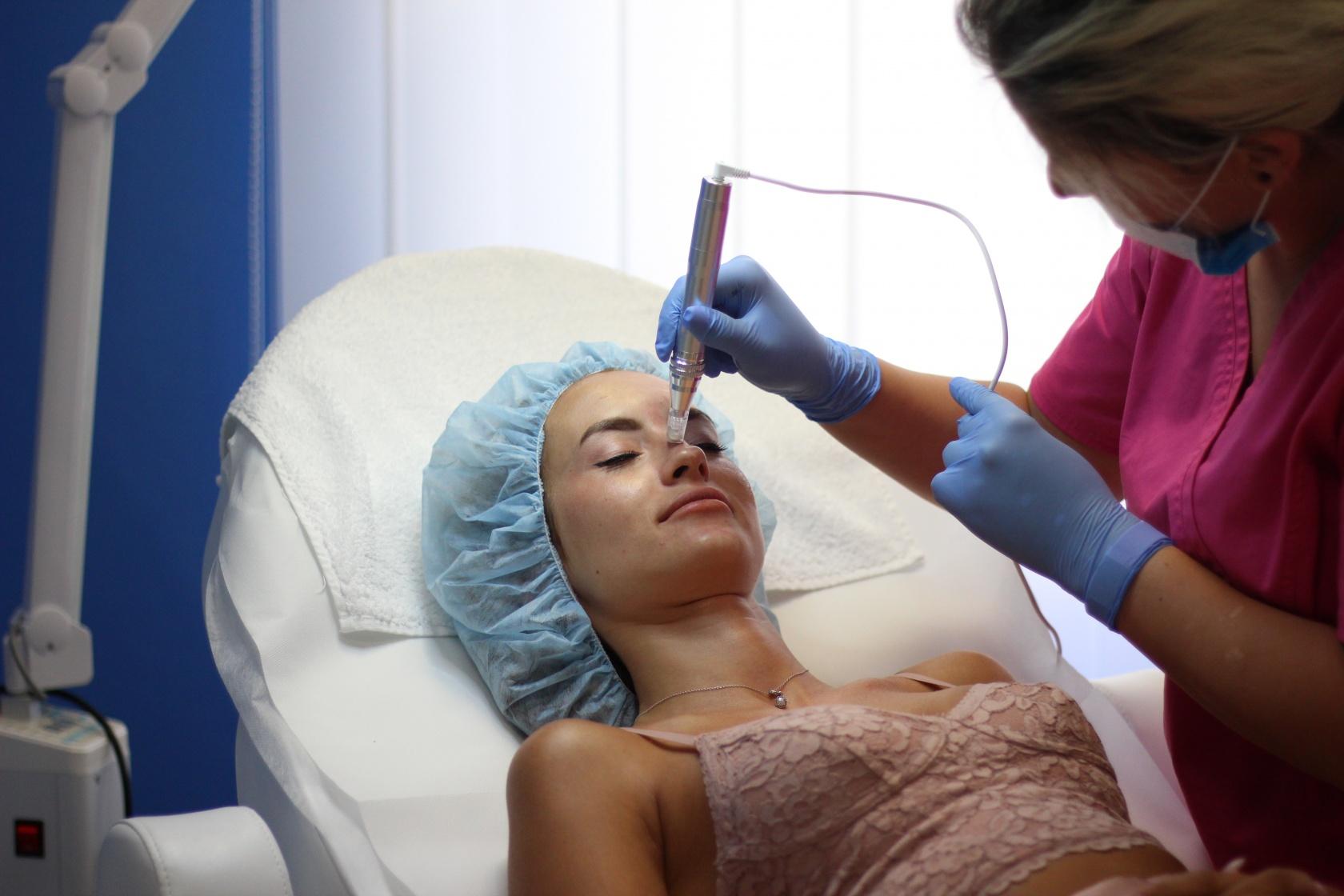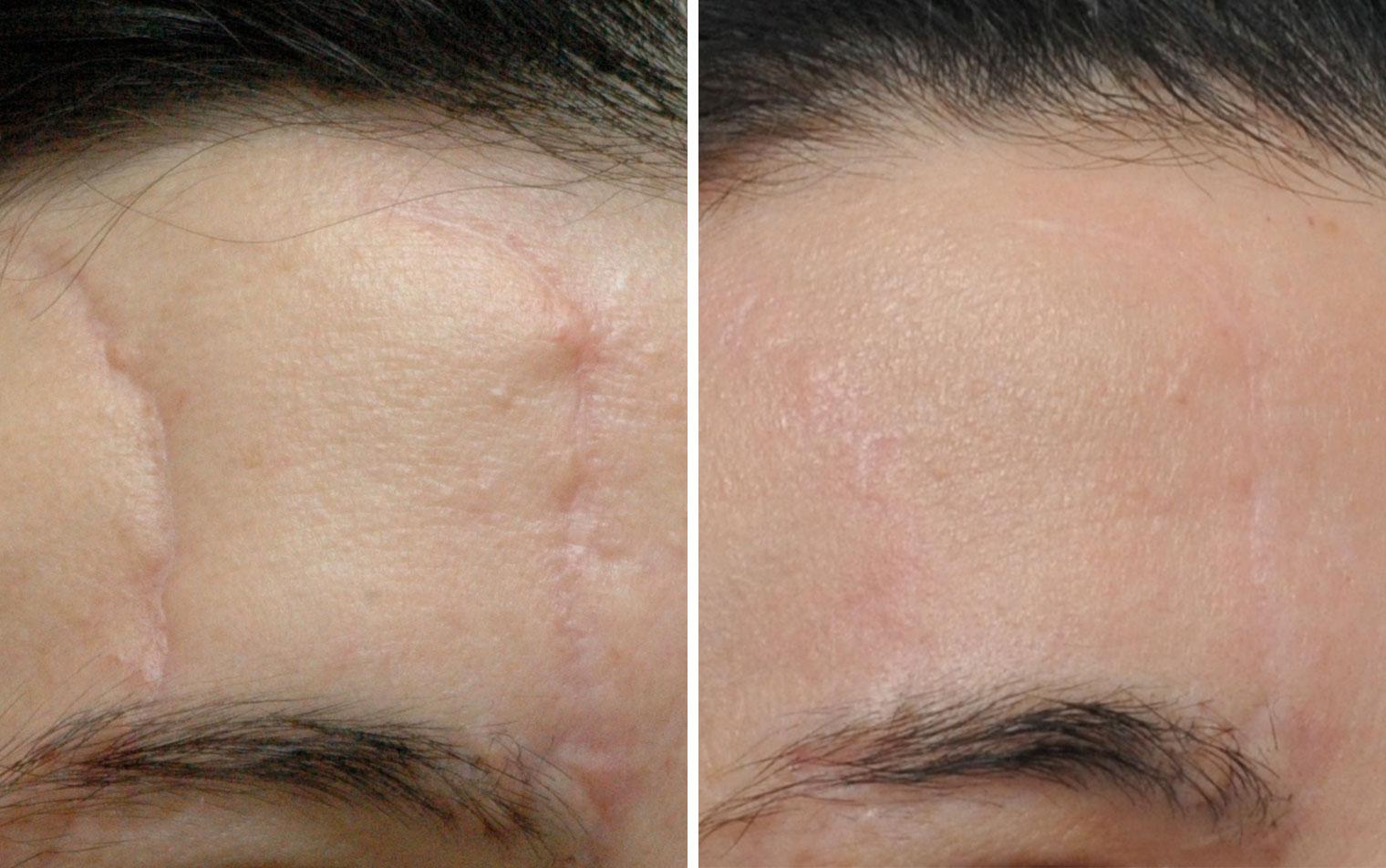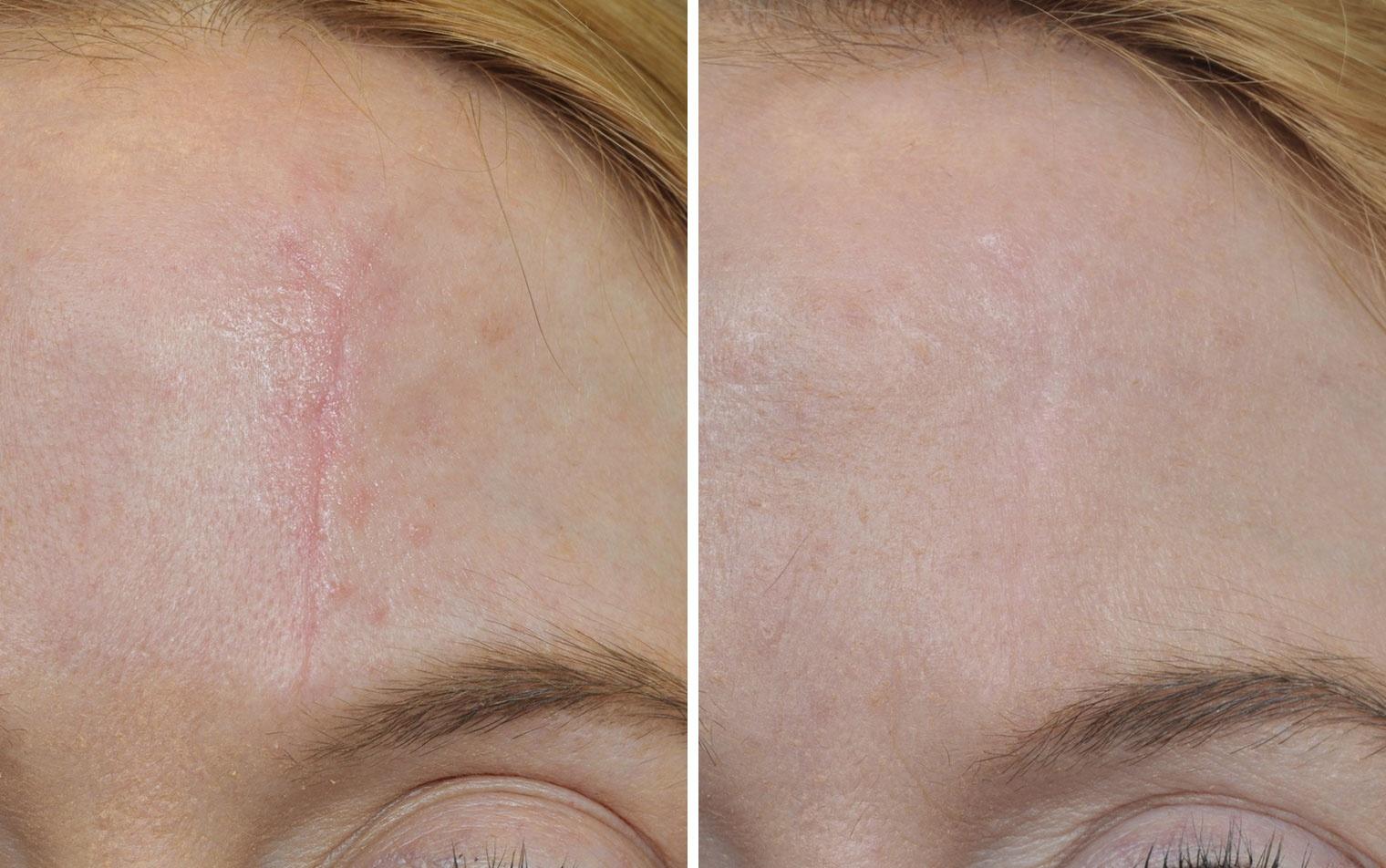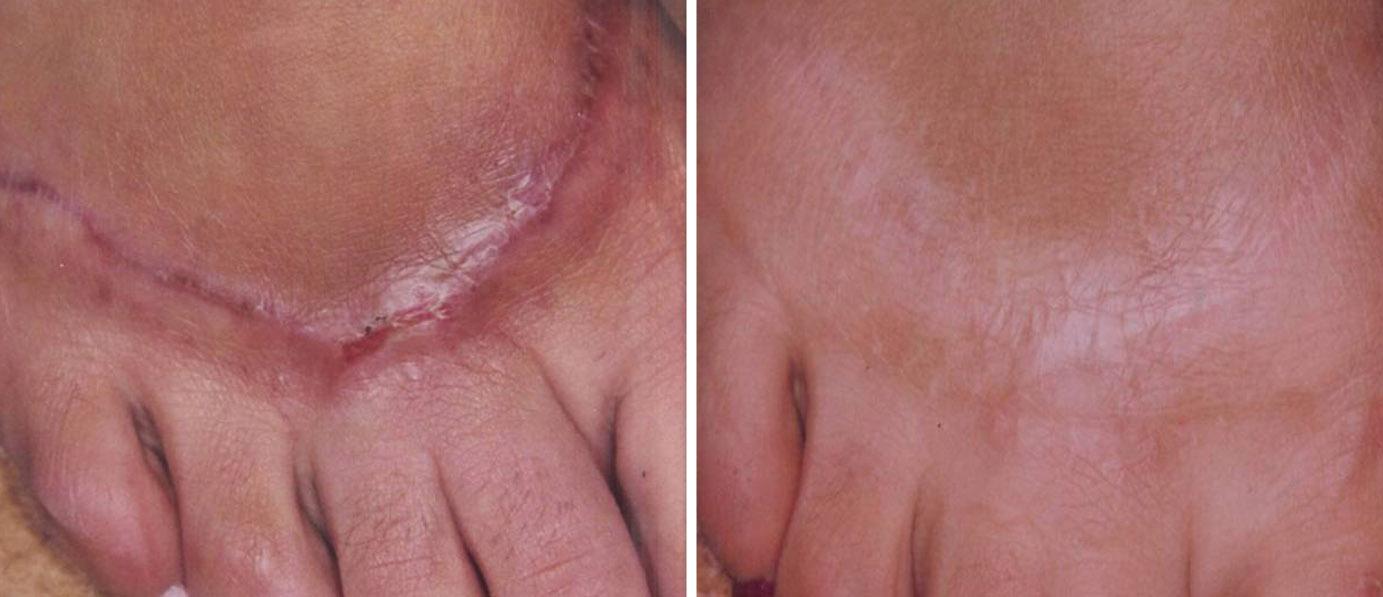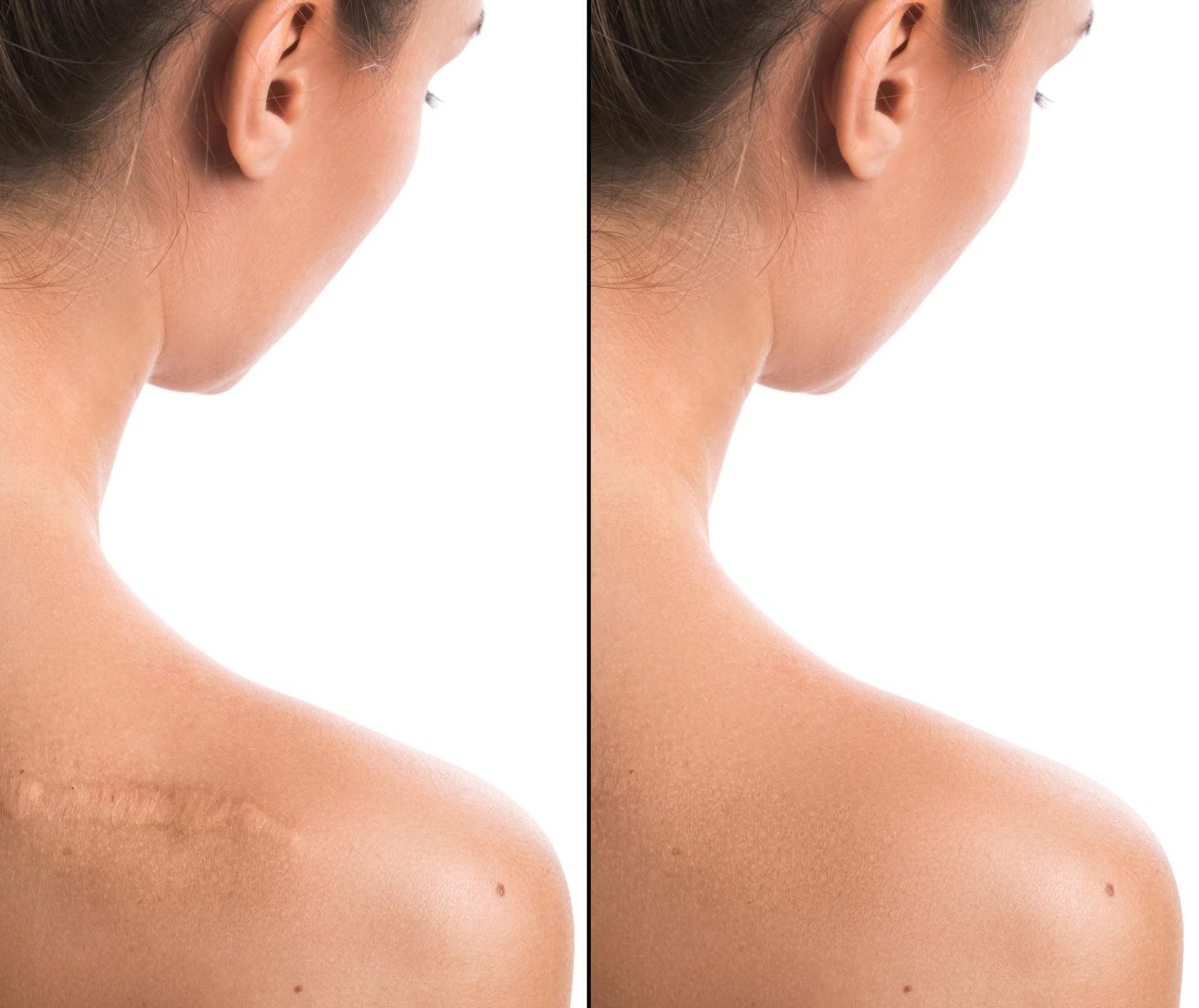
Scars and stretch marks are something everyone is familiar with — they affect not only women but also men. Their formation cannot always be prevented, as there are many possible causes. They are also very difficult to remove. At our medical clinic, an experienced dermatologist will assess your scars and stretch marks and propose an appropriate treatment plan. The most common treatments include laser therapy, chemical peeling, or microneedle radiofrequency. Deep, sunken scars are treated using autologous plasma transplantation or hyaluronic acid fillers, which help to fill the depressions.
Details
Scars usually form as a result of deeper skin damage or following an inflammatory skin condition.
Based on their appearance, scars are divided into atrophic (depressed) and hypertrophic (raised) types.
Atrophic scars typically occur after acne, injury, or surgery. This group also includes stretch marks (striae), which most commonly appear on the abdomen, buttocks, thighs, and back, often caused by rapid weight changes or growth spurts.
Hypertrophic scars usually develop after healing of deep wounds or surgical procedures. They are raised, firmer to the touch, and influenced by genetic predisposition, location, and age — most commonly appearing between puberty and age 30.
We offer several methods aimed at improving the appearance of scars, such as:
- Cryotherapy (freezing with liquid nitrogen),
- Injection of corticosteroids directly into the scar,
- Laser treatment,
- Chemical peeling, or
- Microneedle therapy.
The choice of treatment depends on the age, location, and size of the scar.
It is important to understand that a scar cannot be completely removed, only its appearance can be improved.
The specific method is always determined after a personal consultation with a physician, based on the number, size, and placement of the scars.
